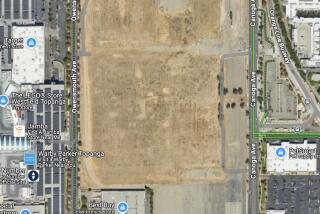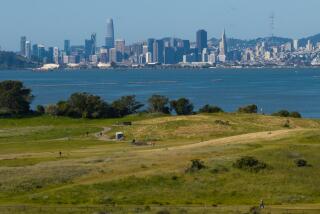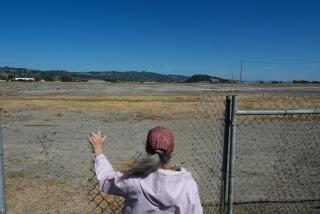Bladder Cancer Rate Found Higher Near Rocket Test Site : Health: A state report on three areas near Rockwell’s Santa Susana Field Laboratory draws no conclusions about the cause of the increase.
Elevated rates of bladder cancer have been found in some areas east of Rockwell International’s Santa Susana Field Laboratory, according to a preliminary state health report that draws no conclusions about the cause of the increase.
The six-page report, dated October, 1990, but released Monday, said bladder cancer rates were about 50% higher in three census tracts in Canoga Park and Chatsworth than for Los Angeles County as a whole.
In one tract, the increase from 1983 through 1987 was a statistically significant jump to 37 cases, about 50% more than researchers would expect to find in such a group.
In the other two tracts, the finding was not statistically significant, the report said, meaning that it could merely reflect a statistical variation common in such studies.
Robert L. Holtzer, a public health medical officer with the state Department of Health Services, said residents should not be alarmed by the data. “Right now we’ve got something that we don’t have an explanation for,” he said. It “could be mathematical. It could be real disease,” Holtzer said, adding that bladder cancer in the study area is still quite rare.
The data was compiled by the cancer surveillance section of the state Department of Health Services, as part of a preliminary study of the health of residents within a five-mile radius of the Santa Susana lab, which is in the Simi Hills in Ventura County. The laboratory was the target of protests by neighbors and environmentalists, concerned about reports of pollution there, from 1989 until last year, leading company executives to eliminate nuclear work at the site.
The report said cancer data for Ventura County census tracts near the plant will not be available until later this year.
Since the 1950s, the 2,668-acre Santa Susana site has been used for rocket testing and was formerly a major center for nuclear development and research under Rockwell contracts with the U.S. Department of Energy. State health officials have asked the department for $341,361 for a study to determine if past chemical or radioactive releases could have affected the health of nearby residents.
This study proposal and the preliminary cancer data are to be discussed this morning in Simi Valley, at a meeting of a federal, state and local interagency work group monitoring environmental cleanup at the Rockwell site.
According to a state health memo, “various activities” at the Santa Susana laboratory “may have created significant environmental releases of hazardous materials over the lengthy operation period of the site.” But the memo stressed that the bladder cancer findings “are preliminary and not necessarily related” to the lab.
It did not speculate on how people miles from the plant could have been exposed to significant contamination.
“I don’t believe there’s anything coming from Santa Susana that would be even remotely related to bladder cancer,” said Dr. Arlene Giliberto, an epidemiologist employed by Rockwell’s Rocketdyne division, which operates the Santa Susana site.
The preliminary report considered rates for various types of cancer in five census tracts in Woodland Hills, Canoga Park and Chatsworth that are within five miles of Santa Susana. For each of the census tracts, the rates were computed for the periods 1978-1982 and 1983-87, and compared to countywide rates.
In some of the tracts, rates for certain cancers were somewhat higher or lower than average, but the report called this consistent with random variation in cancer rates.
But bladder cancer rates were elevated in the three tracts nearest to Santa Susana--bordered roughly by the Simi Valley Freeway on the north, Vanowen Street on the south, Canoga Avenue on the east, and the Los Angeles-Ventura county line on the west. Bladder cancer strikes about 16 of every 100,000 people per year; in those tracts the rate was about 24.
The statistically significant incidence was found in the northernmost tract, north of Roscoe Boulevard.
Bladder cancer has been associated with worker exposure to aniline dyes and with cigarette smoking.
More to Read
Sign up for Essential California
The most important California stories and recommendations in your inbox every morning.
You may occasionally receive promotional content from the Los Angeles Times.










